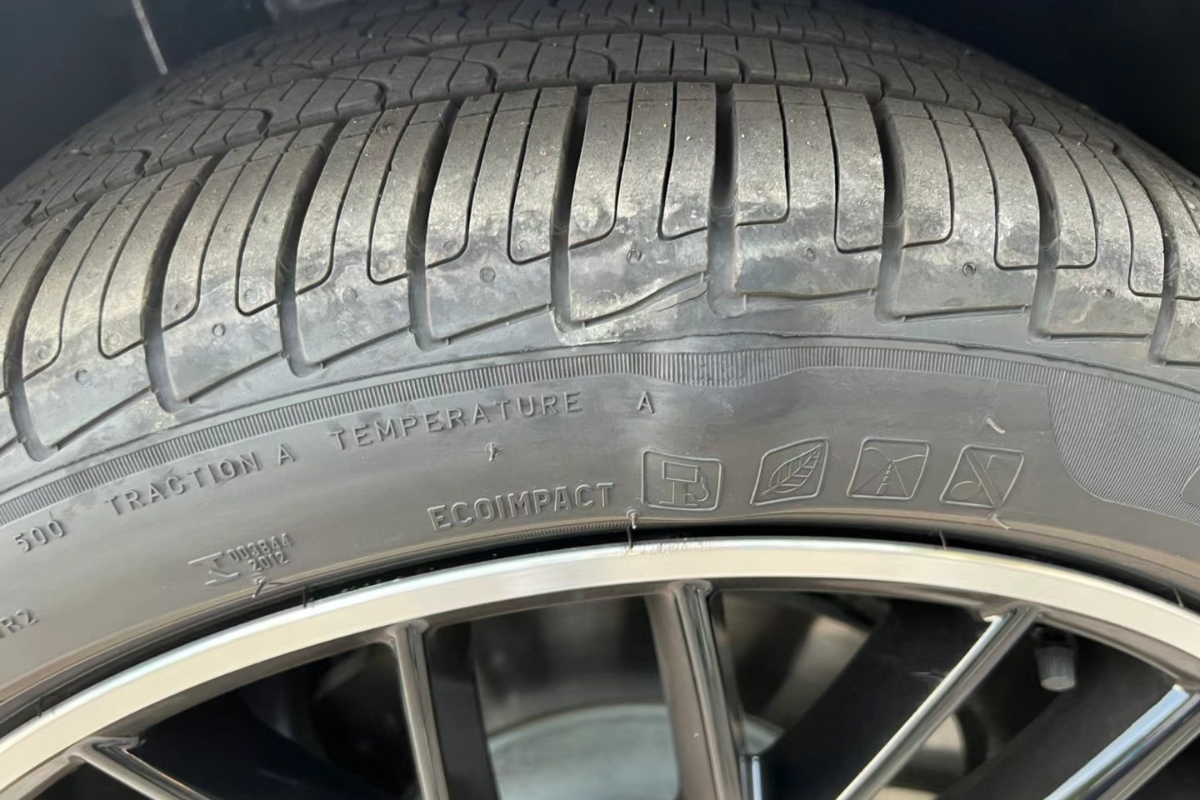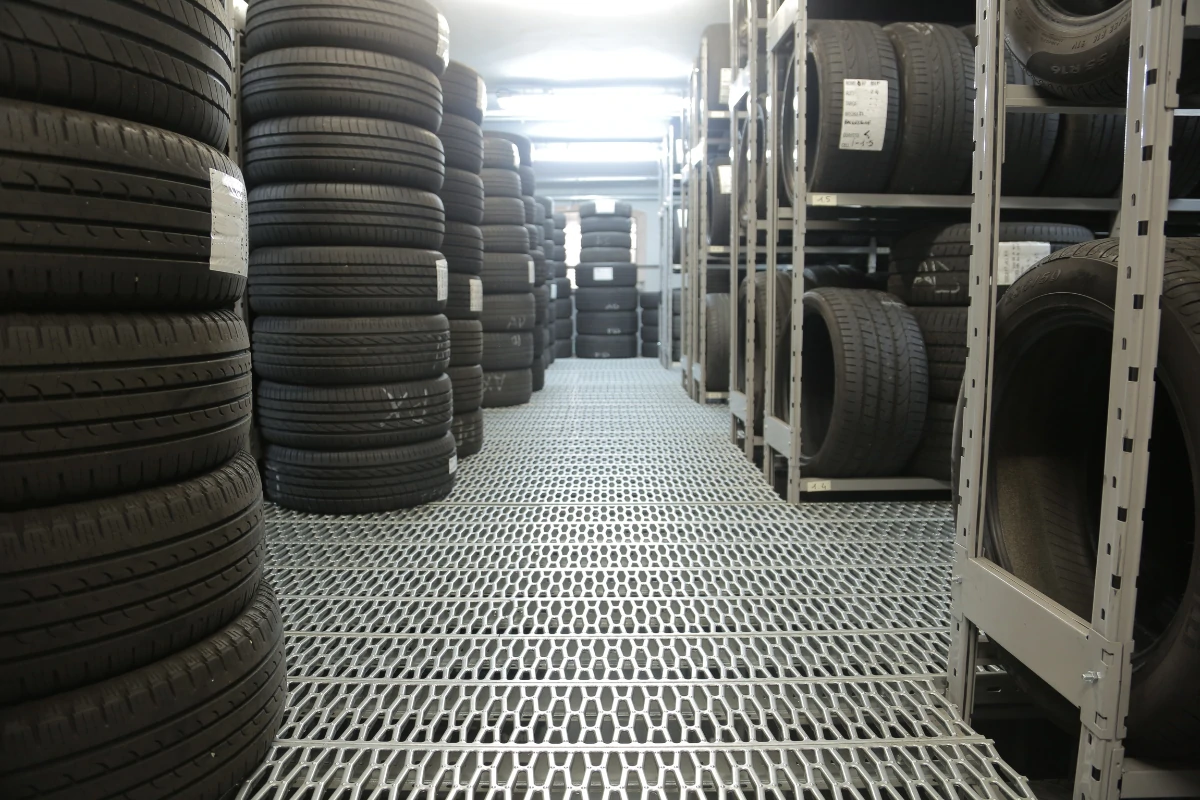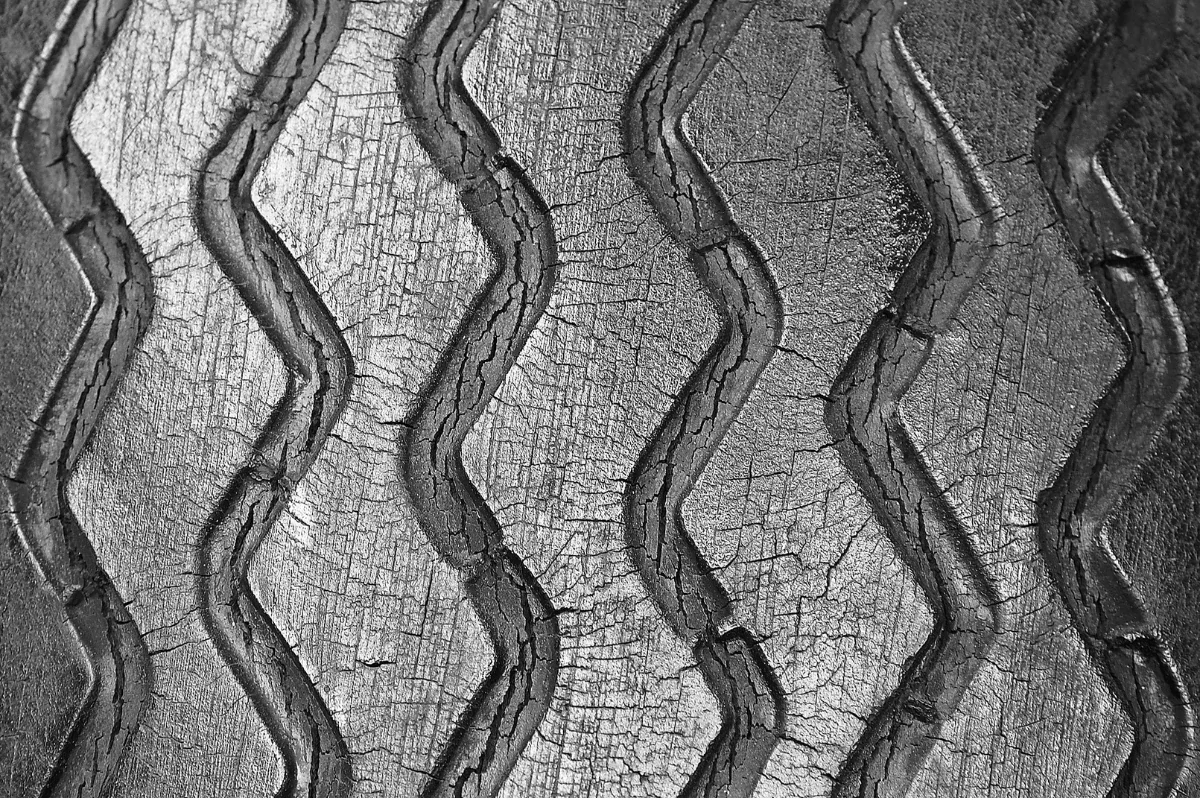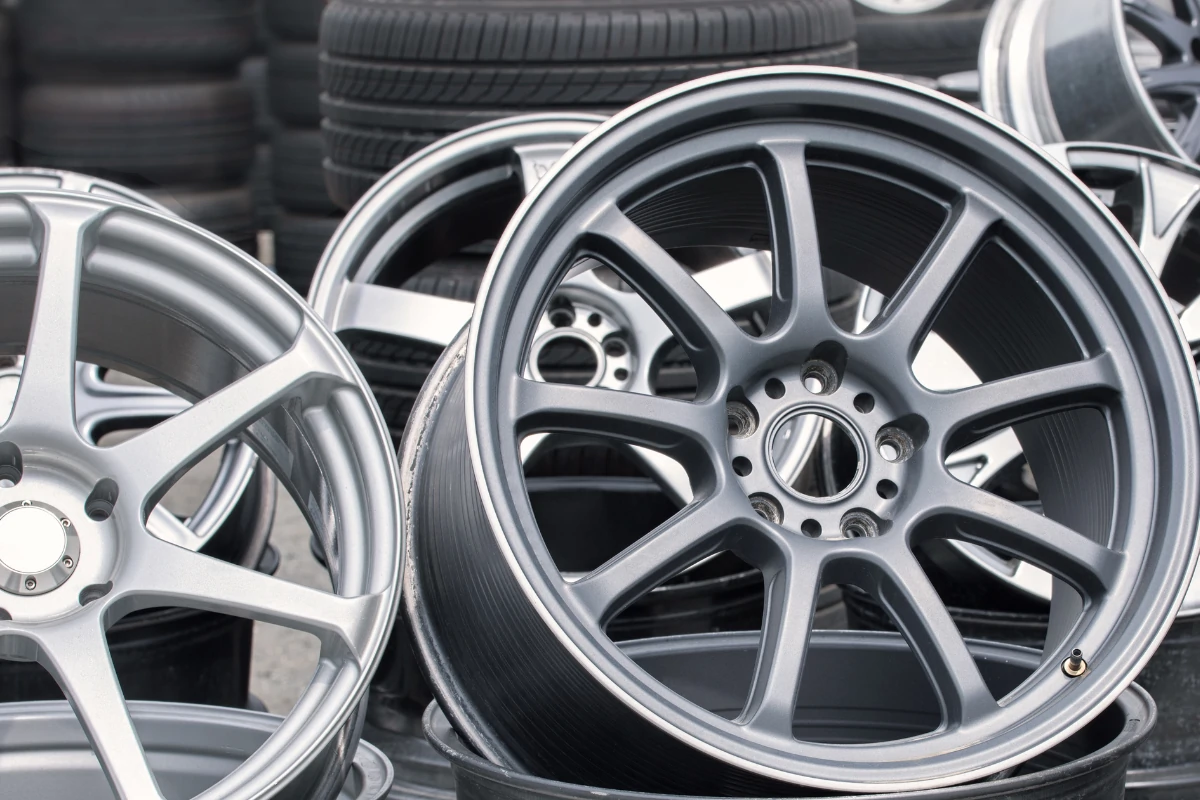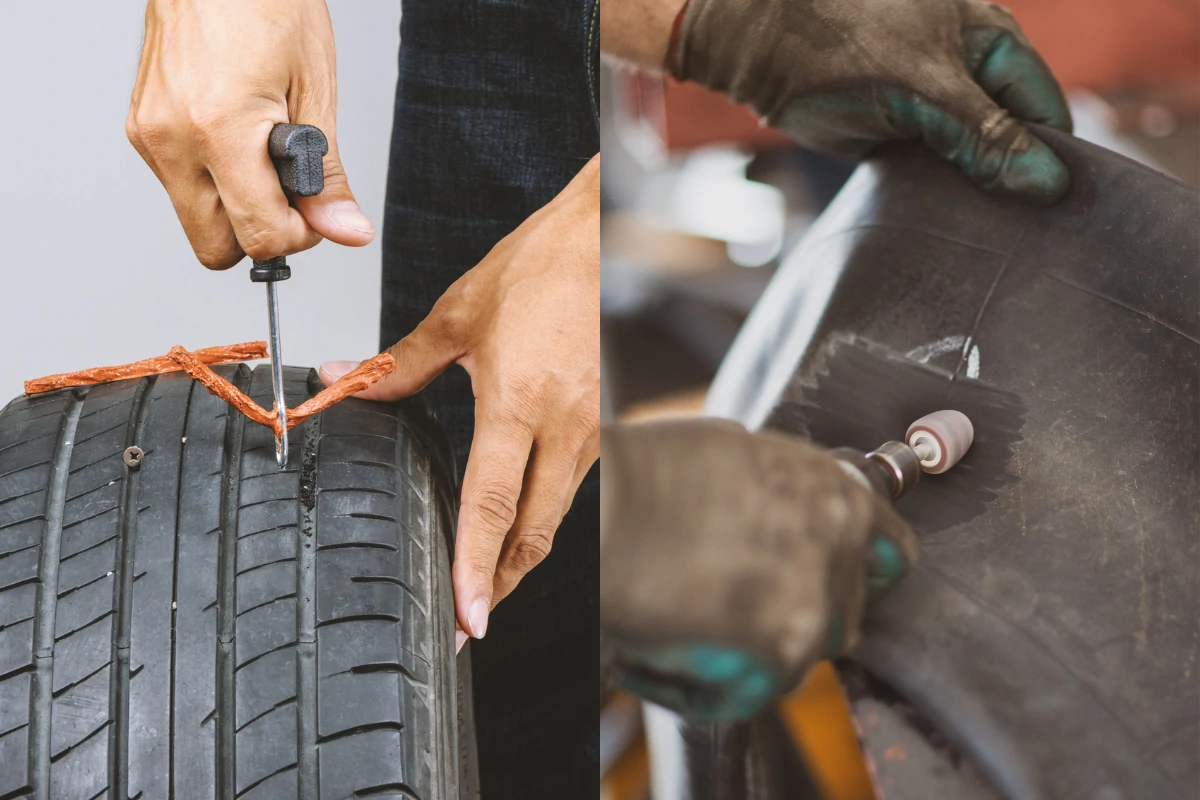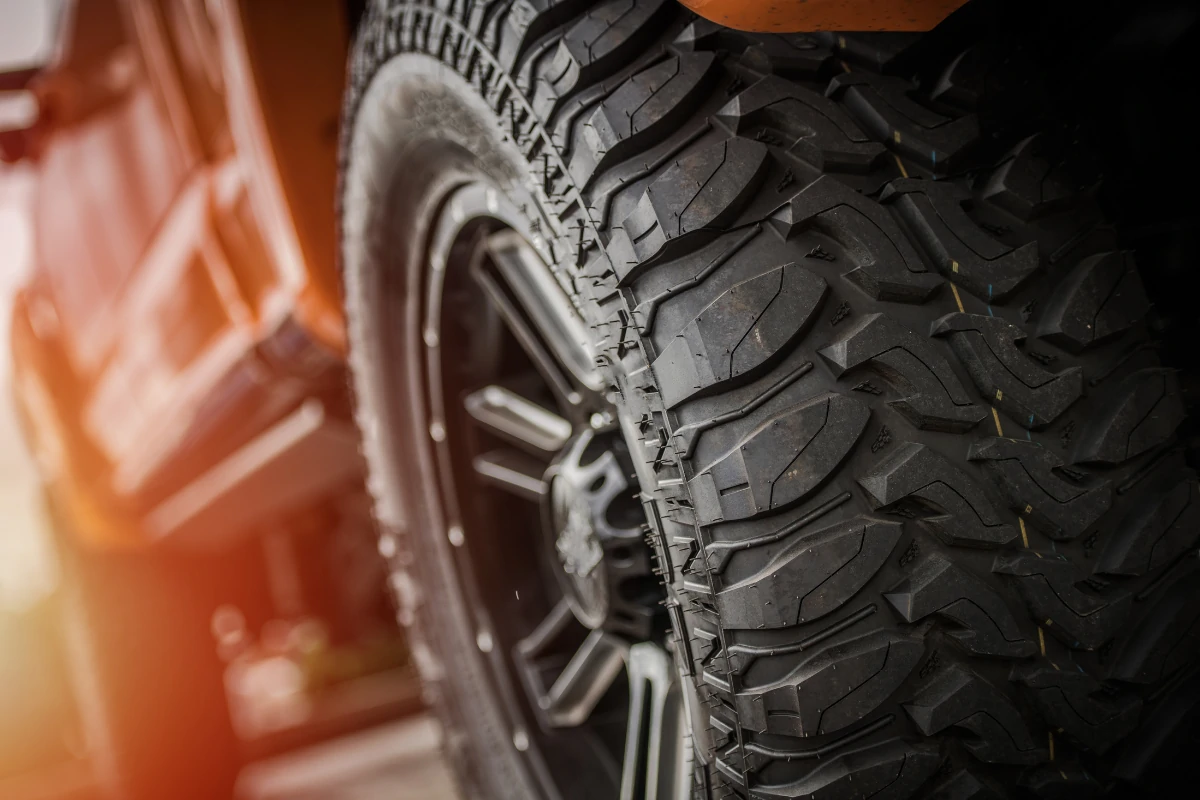Ever spotted a weird bubble in your car’s tire and thought, “What’s going on there? Is this a problem?” Don’t sweat it; you’re not alone. Tire bulges can be a bit mysterious, but fear not!
In this beginner’s guide, we’ll break down everything you need to know about tire bulges, from what they are to how to prevent them.
So, let’s dive right in!
Table of Contents
What Is a Tire Bulge?
A tire bulge (or tire bubble) is like a mini-mountain on your tire’s surface.
It occurs when the INTERNAL STRUCTURE of the tire is damaged. Air sneaks out from the innerliner of your tire to the outermost layer and makes the rubber stick out.
A tire bulge can appear on either the sidewall or the tread.
Bulge in Tire Sidewall
Tire bulges usually pop up on the sidewall.
Why? Well, it’s because there’s LESS material there.
Unlike the tread, the sidewall is basically just those cord plies covered in rubber. There are no steel cords to hold everything together.
So, if you see a bubble in the tire sidewall, it means there’s some damage to the cord plies.
Bulge in Tire Tread
A tire bulge appearing on the tire tread is not common, but it can happen. And the most likely culprit here is a broken belt.
The tire has a layer of steel cords that run around the circumference of the tire, called “BELTS.” They’re what give the tire its strength and stability.
If one of those belts breaks, it can weaken the tire’s structure and cause a bulge.
Causes of Tire Bubbles
Tire bulges don’t just appear out of thin air. There’s usually a reason behind their surprise entrance. Some of the common causes include:
Impact Damage: Ever hit a pothole that felt like it could swallow your car? Those impacts can damage the inner structure of your tire, creating a weak spot where air can sneak through.
Incorrect Tire Pressure: Your tires have a sweet spot when it comes to air pressure. Underinflated tires can’t provide the support your vehicle needs to handle the road. It’s basically putting your tires through a stress test. On the flip side, overinflated tires put a ton of pressure on those internal layers, especially the belts and plies.
Manufacturing Defects: Sometimes, tires roll off the production line with hidden flaws. These flaws can cause bulges to develop over time, and they’re not something you can spot at a glance.
Overloading: Think of it as trying to carry a mountain of grocery bags in one go – it’s bound to end in disaster. If you’re loading up your vehicle beyond its capacity, your tires will feel the strain. And that’s not a good thing.
Can You Drive on a Tire With a Bulge?
NO. You absolutely shouldn’t hit the road with a bulging tire, no ifs, ands, or buts.
Driving on a tire with a bulge is not safe, whether the bulge is on the sidewall or the tread. It’s like trying to run a marathon with a sprained ankle – a recipe for disaster.
You might be thinking, “Ah, it’s just a little bulge, no big deal.” But trust me, it is a big deal!!!
Bulges weaken the tire’s integrity, increasing the risk of a blowout, loss of control, and even accidents.
It is a ticking time bomb, waiting to blow out when you least expect it.
So, if you see a bulge on your tire, take it seriously and get it replaced ASAP. Safety first, always!
How Long Can You Drive on a Tire With a Bulge?
The moment you spot a bulge, it’s time to take action.
In a perfect world, you’d replace the tire with a spare as soon as possible. No fuss, no muss.
If you’re in the middle of nowhere and the only thing you have is a tire repair kit. Don’t sweat it – it’s not the end of the world. Just keep your speed below 45 mph (70km/h), go easy on the gas and brakes, and don’t try any crazy turns. Head straight to the closest auto repair shop, and don’t take any chances.
Driving on a bulging tire is NEVER a long-term solution. The longer you roll with it, the more it’s likely to expand. That’s a one-way ticket to a full-blown blowout. And trust me, nobody wants to deal with that headache.
Can You Fix a Tire Bulge?
Unfortunately, the answer is a solid “NO.”
You cannot patch or repair tire bulges with a simple DIY solution.
A sidewall or tread bubble indicates structural damage to the tire. And no technician, no matter how skilled, can perform miracles on the inside of that tire.
Now, let me break it down with an example to make it crystal clear.
Tire punctures and bulges are kind of like the difference between a CUT and CANCER. Okay, that might be a bit of an exaggeration, but you get the point.
A puncture is an EXTERNAL wound, like getting a cut on your arm. You can easily spot and stitch up it.
But a bulge is an INTERNAL injury, like cancer. It’s hard to detect or deal with just by looking at the outside, even though both a cut and cancer can harm your body.
Once a tire has a bulge, the only safe route is to replace it. Trying to fix it could put you at risk while driving. Your safety is a top priority!
How to Prevent Tire Bulges?
Prevention is always better than dealing with the aftermath of a bulge. Here are some tips to help you keep those pesky tire bulges at bay:
Avoid Road Hazards: Be cautious while driving and try to avoid potholes, curbs, and other obstacles.
Inflate to Correct Pressure: Regularly check and maintain the correct tire pressure recommended by your vehicle’s manufacturer.
Maintain Your Tires: Regular rotation, alignment, and balance can help your tires avoid abnormal wear and reduce the risk of bulging.
Properly Load Your Vehicle: Avoid overloading your vehicle. Excessive weight can put extra stress on your tires and increase the risk of bulges.
Buy Quality Tires: Invest in high-quality tires from reputable brands to reduce the risk of manufacturing defects.
The Bottom Line
Tire bulges are a serious matter that requires immediate attention.
Whether on the sidewall or the tread, a bulge is a sign of internal damage. Never take the risk of driving on a compromised tire.
Regular maintenance, cautious driving, and proper care can go a long way in preventing these troublesome bulges from ever showing up on your tires.
Stay safe on the road, and keep an eye out for those unexpected tire bumps!

